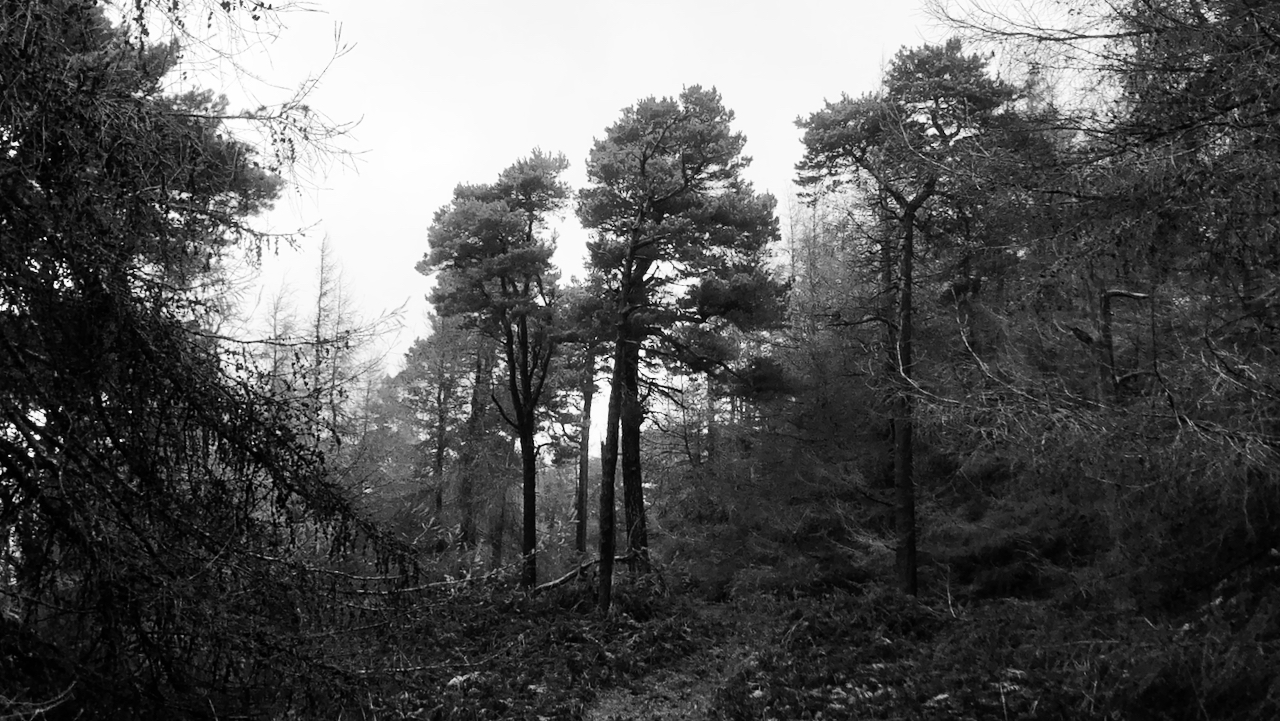… ‘haloed‘ by the National Trust to give a breathing space and a chance to harden up before the remaining larch plantation is felled next winter.
These trees are on a ridge called, quite coincidentally I think Scot Ridge, in Bransdale in the heart of the North York Moors.
Barker Plantation is shown on the 1857 OS Six-inch map1‘View Map: Yorkshire 58 (Includes: Bilsdale Midcable; Bransdale; Helmsley; Pockley.) – Ordnance Survey Six-Inch England and Wales, 1842-1952’. 2022. Maps.nls.uk <https://maps.nls.uk/view/102344347#zoom=6&lat=4583&lon=10797&layers=BT> [accessed 24 November 2022], and as Scots Pine live to about 250 years2Mabey, Richard. “Flora Britannica”. Page 23. Reed International Books Ltd. 1996. ISBN 1 85619 377 2., it is quite probable that these trees pre-date the original plantation.
Scots Pines are considered native to Britain although it’s been about 5,000 years since the seeds of the last indigenous specimens germinated in England and Wales. In the buried peat beds and forest at Redcar, cones of the Scots Pine have been discovered3Elgee, Frank (1912). The Moorlands of North-Eastern Yorkshire: their natural history and origin. Page 133. London: A Brown & Sons. OCLC 776748510.. Climate change was the cause of this Neolithic extinction.
But they thrived in Scotland, in ‘the Old Wood of Caledon‘ stretching across the Highlands from Perth to Ullapool until the insatiable demands of modernity denuded the forests to a few remnants4Mabey. Page 21..
So, all Scots Pines today (in England) have either been planted or are self-seeded from planted trees. They were planted to be a feature in the landscape, perhaps marking the burial places of chieftains. In the lowlands, they were often planted in clumps along drove routes as waymarkers or where grazing and hospitality could be obtained5Ibid. Page 23..
I think these Scots Pines on Scot Ridge were not planted as a signpost to the way out of the dale, nor to commerorate a fallen warrior, but to ‘improve‘ the view for Lord Feversham and his guests at Bransdale Lodge.
Well, that’s my guess anyway.
- 1‘View Map: Yorkshire 58 (Includes: Bilsdale Midcable; Bransdale; Helmsley; Pockley.) – Ordnance Survey Six-Inch England and Wales, 1842-1952’. 2022. Maps.nls.uk <https://maps.nls.uk/view/102344347#zoom=6&lat=4583&lon=10797&layers=BT> [accessed 24 November 2022]
- 2Mabey, Richard. “Flora Britannica”. Page 23. Reed International Books Ltd. 1996. ISBN 1 85619 377 2.
- 3Elgee, Frank (1912). The Moorlands of North-Eastern Yorkshire: their natural history and origin. Page 133. London: A Brown & Sons. OCLC 776748510.
- 4Mabey. Page 21.
- 5Ibid. Page 23.

Leave a Reply